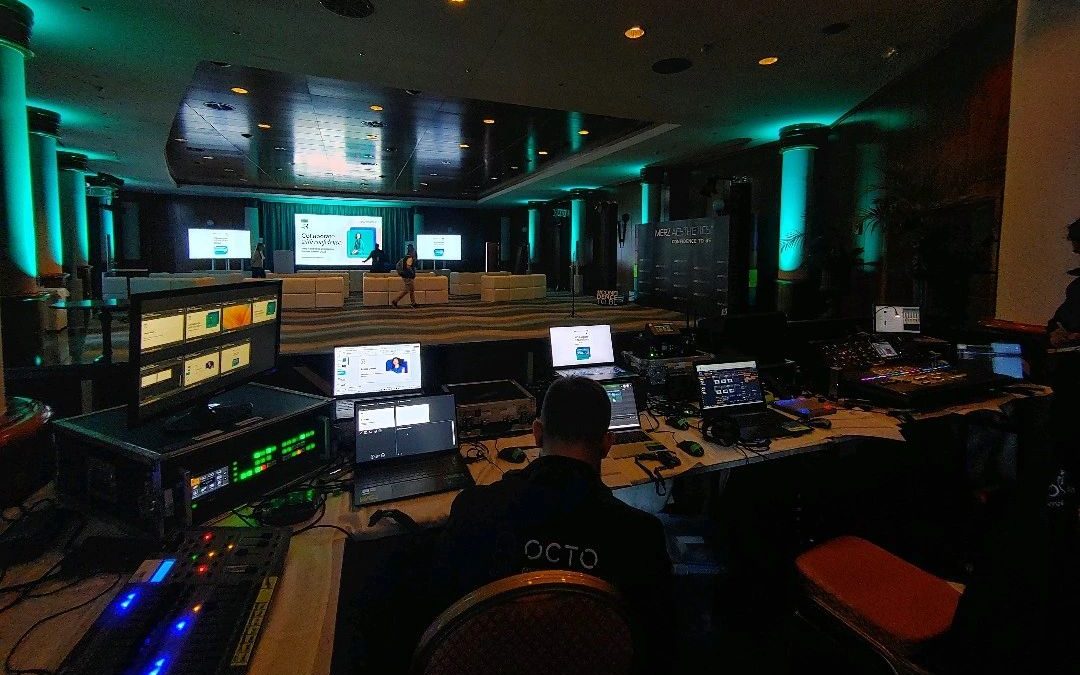Discover everything you need to stream events successfully and professionally. From basic equipment to key tips for achieving high-quality streaming.
Streaming events has become a must-have tool to reach a global audience effectively. To achieve a successful transmission, it is essential to have the right equipment and follow detailed planning. From a high-quality video camera to a reliable streaming server, every element plays a crucial role in the final quality of the stream.
In addition, the choice of the broadcast platform and the internet connection are aspects that should not be overlooked. Good planning, smooth communication with the team, and interaction with the audience during the event are key to ensuring a high-quality experience for both spectators and audience members. organizadores.
Basic Equipment for Streaming
To start streaming events, you’ll need the following basic equipment:
- High-quality video camera: It is critical to have a professional video camera that can capture sharp, high-resolution images.
- Quality microphone: To make sure that the audio in your stream is clear and interference-free, it’s important to invest in a good microphone.
- Computer or streaming device: You’ll need a computer or device that’s capable of processing and transmitting the video signal in real-time.
- Live streaming software: You’ll need to use specialized streaming software that allows you to manage the video stream efficiently.
Here are some of the basic equipment you’ll need to start streaming events. Remember that the quality of your equipment will directly influence the quality of your stream.
Machines Used
In event streaming production, various machines are used to ensure a successful broadcast. Some of the most common machines include:
- Video Mixer: This equipment will allow you to switch from one camera to another and mix different video sources in real-time.
- Video encoder: It is responsible for converting the analog video signal into a digital format suitable for live transmission.
- Streaming server: This is the place where the video signal is stored and distributed in real-time, allowing viewers to access the stream.
These are just a few of the machines that are used in event streaming production. Depending on the complexity of your transmission, you may need to use additional equipment.
Required Personnel
Streaming events requires a team of trained people to ensure a successful broadcast. Some of the necessary staffing roles may include:
- Camera Operator: Is responsible for capturing the images during the event, following the instructions of the broadcast director.
- Audio Technician: Responsible for setting up and monitoring the audio system during the broadcast, making sure that the sound is clear and of high quality.
- Video Engineer: Their main role is to ensure that the video signal is transmitted smoothly and without technical interruptions.
- Streaming Producer: This is in charge of coordinating all aspects of the live stream, making sure that everything is working properly.
It is important to have a team of qualified and coordinated people to achieve a successful transmission at events.
Video, Audio & Lighting
Video, audio, and lighting are critical aspects of ensuring high-quality streaming at events. Some key points to keep in mind are:
- Video: Use a high-quality video camera to capture sharp, high-resolution images. Make sure you frame your shots well and use smooth camera movements.
- Audio: Use quality microphones to capture clear, interference-free sound. Pre-test to adjust audio levels to make sure everything sounds right.
- Lighting: Make sure you have adequate lighting so that the images look good. Use quality lights and pre-test to get the best result.
Here are some basic tips for achieving quality video, audio, and lighting in your event streams. Remember that good technical quality will improve the viewers’ experience.
Conexión y plataformas de emisión
Para transmitir en vivo un evento, es necesario contar con una conexión a internet estable y rápida. Además, deberás elegir la plataforma de emisión que mejor se adapte a tus necesidades. Algunos puntos clave a considerar son:
- Conexión a internet: Asegúrate de tener una conexión a internet de alta velocidad y estable para evitar cortes en la transmisión. Realiza pruebas previas para asegurarte de que la conexión sea confiable.
- Plataformas de emisión: Existen diversas plataformas de emisión en vivo disponibles, como YouTube Live, Facebook Live, Twitch, entre otras. Elige la plataforma que mejor se adapte a tu público objetivo y a tus necesidades técnicas.
- Pruebas previas: Antes de comenzar la transmisión en vivo, realiza pruebas previas para asegurarte de que todo funcione correctamente. Verifica la calidad de la conexión, la configuración de la plataforma de emisión y la señal de video y audio.
Una buena conexión a internet y la elección adecuada de la plataforma de emisión son fundamentales para garantizar una transmisión exitosa en eventos.
Tips for a Successful Stream
Here are some key tips for successful event streaming:
- Plan and organize: Before the event, plan and organize all aspects of the broadcast, from the necessary equipment to the technical setup. Carry out pre-tests and have a contingency plan in case of any unforeseen event.
- Communicate with the team: Maintain fluid communication with the entire production team to ensure that everyone is on top of the details and can coordinate properly during the event.
- Engage with the audience: Take advantage of the broadcast platform’s engagement tools to engage with the audience in real-time. Answer questions, conduct polls, and encourage viewer participation.
- Promote the broadcast: Before the event, promote the broadcast on your social media and other communication channels to build buzz and grow viewership.
By following these tips, you’ll be able to achieve successful event broadcasts and provide your audience with a high-quality experience.




